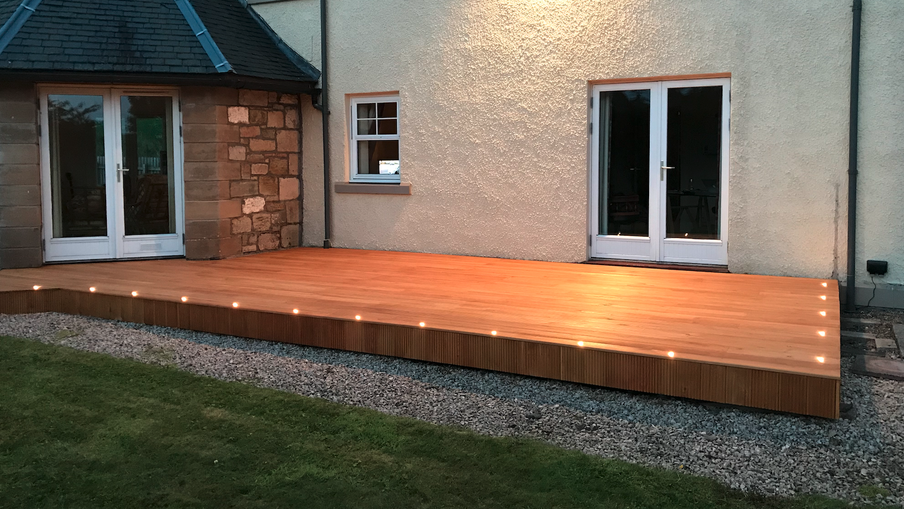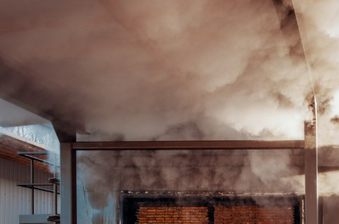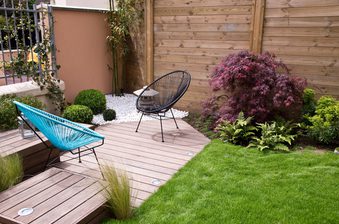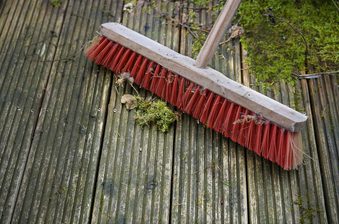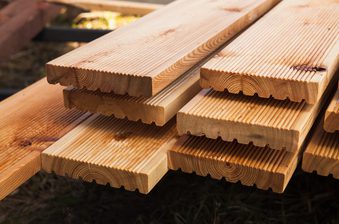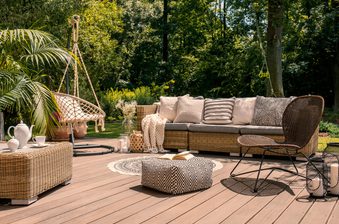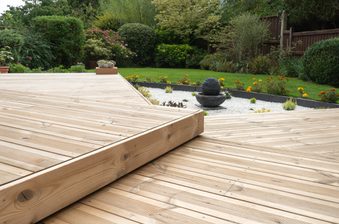With eye-catching beauty and incredible natural properties, here’s why Iroko might just be the perfect timber species for your next decking project.
As well as helping you to get more enjoyment out of your home’s outdoor space, quality decking can even add value to your property — particularly when you use a luxurious, exotic hardwood, like Iroko!
Hailing from the forests of coastal west Africa and tropical central Africa, Iroko is sometimes colloquially known as ‘African teak’ — which tells you a lot about its stunning beauty, remarkable durability and top-notch strength.
Let’s explore a little more about this timber decking species that has caught the eye of architects, designers and stylish home improvers across the land.
What makes Iroko so good for decking?
1. Exotic beauty
When fresh cut, Iroko (scientifically known as Milicia excelsa) has a yellow colour which quickly matures to a stunning, versatile golden brown, occasionally containing dark streak markings.
Upon close inspection, the wood’s unique interlocking grain conveys a sense of distinction and, for many, luxury. Versatility is key, too — many people find Iroko to be a choice that is sufficiently daring and exotic, but still at home in any project and not too garish.
African hardwoods like Iroko, Sapele, Wenge, Utile and Zebrano afford your project a mysterious touch, and have gained significant popularity in many architectural design circles. They provide something different — a focal point with a wood that is not only incredibly unique to look at and admire, but has an interesting story behind it.
Because of the colour and grain similarities, many draw comparisons between Iroko and Teak — both exceptional, beautiful and high-performance hardwoods for exterior use.
2. Incredible durability
Not only does Iroko decking look superb, but it naturally stays that way for a very, very long time.
Iroko is packed full of natural oils and resins which afford it excellent insect and rot resistance. As such, it does not necessarily need regular treatment or maintenance, even when used outdoors.
When you combine its incredible good looks with its fantastic natural physical durability, it’s not hard to see why many regard Iroko timber as the ‘Rolls-Royce of decking’.
3. Superb strength
African hardwoods like Iroko are extremely slow growing, which makes them very dense and strong.
This gives them remarkable resistance to scratches, bumps and scrapes — which is exactly what you need for a high-use, high-impact surface where you can expect a lot of footfall — like decking!
Iroko has a density of 660kg/m3, which places it at the high end for strength. It’s on a par with many other popular decking timbers like European Oak and Siberian Larch (675kg/m3 and 590 kg/m3 respectively), both themselves renowned for impeccable strength.
Iroko timber decking: what does it look like?
Despite the incredible natural durability and strength, there’s no getting away from one of the key reasons behind Iroko’s popularity — its devilish good looks. Iroko conveys class.
Those mysterious, golden brown hues and a distinctive grain evoke a luxury that can’t be easily imitated by other woods.
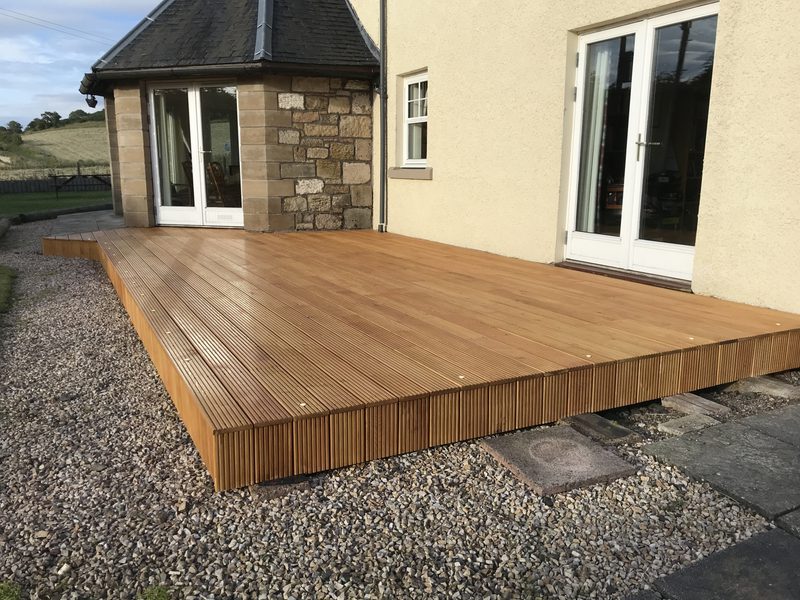
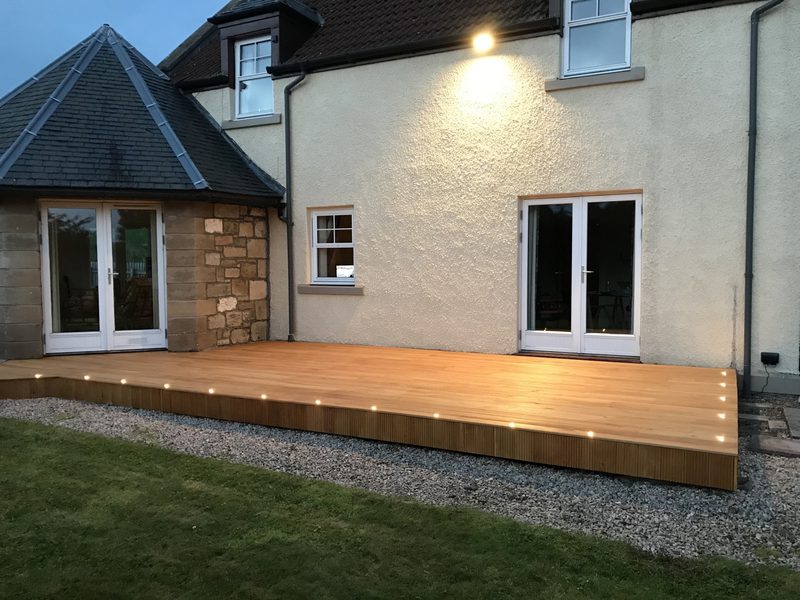

Iroko decking: treatment and maintenance
When it comes to treating your Iroko decking, we’d recommend an application of a product like Owatrol Aquadecks. A water-based finish like this is perfect for exotic hardwoods, helping to maintain the wood’s beautiful original colour.
Treatment will drastically reduce and slow down the bleaching effect of the sun’s UV, stopping your deck turning a silvery-grey over time. It will also help the deck to repel rainfall and moisture, known to be troublesome to all timber species.
Whilst Iroko has fantastic insect and rot resistance, a good finish will saturate and stabilise the wood, preventing possible aging, warping and cracking. This will ensure you get the longest service life possible out of your deck.
After cleaning the deck, allow the boards to dry for at least 24 hours before applying your finish. This is best done on a dry, mild summer’s day.
For a new, untreated project, it’s possible to wait around a year before applying the first finish — but continue gently cleaning the deck throughout the year. Depending on your deck’s exposure to UV and moisture, consider re-applying a finish like this every 2–3 years.
With the installation of your Iroko deck, make sure to use stainless steel fixings. This will help to avoid the staining effect — other types of fixings can react with the timber.
How much is Iroko decking?
Is Iroko wood expensive? A highly sought after and slow-growing timber species, it shouldn’t come as a surprise to learn that Iroko decking typically commands a marginally higher price than many other commercially-available timber decking species.
For example, in a smooth profile, Iroko decking comes in at £8.95 + VAT per linear metre. This compares to £6.95 + VAT for the equivalent decking profile in Siberian Larch, and £5.25 + VAT for a popular modified timber decking species like ThermoWood. Another popular exotic species, Balau, comes in at the £7.75 + VAT price point.
We’d say it’s always worth investing in a quality timber solution, rather than a cheaper deck like those that are often available from home improvement stores across the UK. The woods used for those types of decking are often of inferior durability and strength. When it comes to your decking, don’t forget the old adage ‘buy cheap, buy twice’!
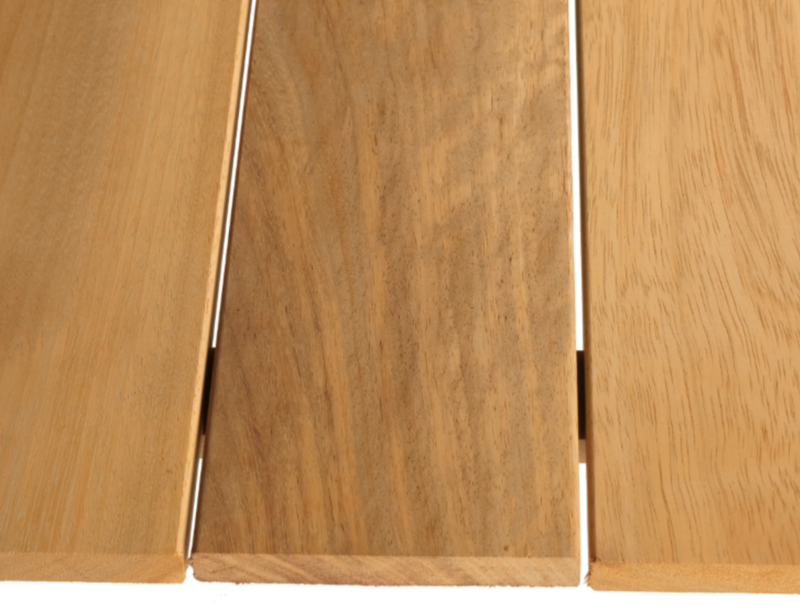
Duffield Timber: your leading UK Iroko decking suppliers
Ready to start your Iroko decking project? At Duffield Timber, we’re a leading UK supplier of a wide range of timber decking products.
Choose from a range of beautiful, high-performance timbers, each machined to a number of stylish profiles. This of course includes Iroko decking, available in a number of profiles — smooth, fluted, flat & fluted as well as castellated.
Get in touch with our team of timber experts to start your next Iroko decking project.
